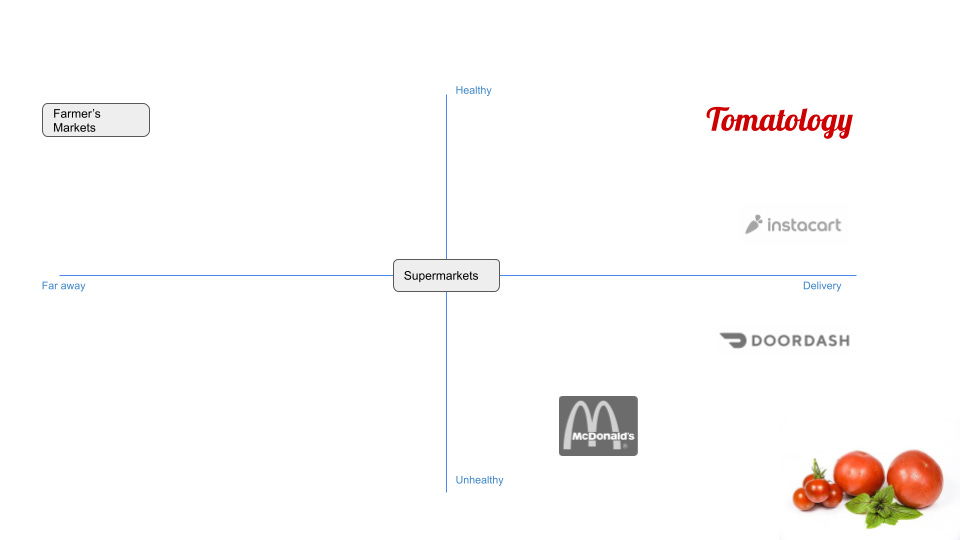Your Competitive Landscape is a Junkyard
All companies present a competitive landscapes, but most are useless.
You know your competition well, but not everyone does. Whether it’s investors, customers or partners, your ability to talk about the competitive landscape is critical to building your company’s brand and ensuring you stand out from the crowd.
Unfortunately, almost all companies present their competitive landscape as a four-quadrant diagram that has some arbitrary axes which artificially position your company in the upper right corner.
Much of this was driven by the Gartner “Magic Quadrant” where Gartner ranks vendors on a grid and companies in the upper right are the best products. If you are on the Gartner Magic Quadrant for your vertical, use that. If not then these charts are not very helpful.
There are much better ways to think about and present your competitive landscape, that both educate the audience and emphasize your real competitive advantages.
Let’s consider the example of Tomatology, a company I just made up. Tomatology delivers tomatoes on-demand, and needs to describe the competitive landscape to potential investors (Editor’s note: any relation to existing businesses is a coincidence!). If they use the four quadrant approach, this is what they might have:
Following the typical quadrant format, it includes competitors to on-demand tomato delivery including Supermarkets, McDonald’s and Instacart. By choosing “Health” and “Distance from consumer” as the axes, Tomatology is magically in the all important upper right position.
It’s already hard enough to take on-demand tomato delivery seriously, so no one is going to believe this chart. It’s just a work of fiction to try and get Tomatology in the upper right corner.
A much better approach would be to use the competitive landscape to show real differentiation and educate the audience about the market at the same time. For example, they could use a value chain to show how their approach to tomato delivery is radically different than existing providers:
Whether or not you believe in the Tomatology business, this makes the competitive landscape much easier to understand since it’s describing how the market works. There are a lot of steps to get a tomato in the hands of a consumer using super markets, and consumers have to work harder to go to Farmer’s Markets. It also emphasizes what makes Tomatology different, its ownership of the entire supply chain, which is the goal of competitive landscapes anyway.
Another approach is to put yourself in the shoes of a customer and describe how their life is different with and without your product. For Tomatology that might look like this:
This makes the difference in consumer experience obvious, while also making it easy to compare offerings. If you work in a complex industry and don’t want to get bogged down in minutiae this can be a great approach.
Finally, you can explain the competitive landscape as part of larger, macro trends in your industry. There are a number of macro trends in food and delivery that fit Tomatology well:
By highlighting the competition as part of prior trends, the competition seems “old”. At the same time, it’s clear that the market is moving in the direction of Tomatology.
Of course, all of these approaches only work if you are telling the truth! You need to be honest and be able to backup however you frame the competitive landscape. If you don’t, the truth will come out and you’ll lose your credibility.
However you choose to describe your competitive landscape, it should educate as much as communicate. Don’t fall back on tired models like the quadrants just because everyone else uses them, this is a chance to stand out from the crowd by putting real thought into it. Have the confidence in yourself and your knowledge of your market to frame it in a new way and ensure you really do have a competitive advantage.
My Maven class is already underway, but there are a ton of other great classes offered on Maven that might be useful to you as a founder. Some of the classes available include “Startup Marketing Bootcamp”, “Negotiation for Startups” and “Testing Business Ideas”. Take a look at their classes here and give it a try!







